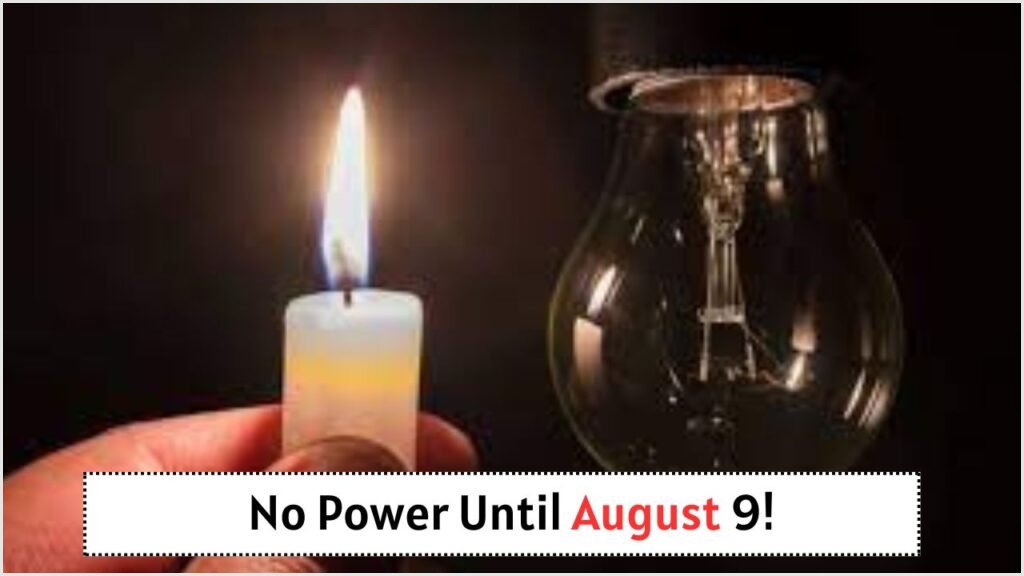Eskom Extends Stage 4: South Africans are once again preparing for the realities of prolonged power cuts as Eskom extends Stage 4 load shedding. This decision comes amid ongoing challenges in the national grid, impacting households and businesses alike. Residents across the country are urged to familiarise themselves with the updated power cut schedules to better manage their daily activities amidst the energy crisis. The extension of Stage 4 load shedding serves as a reminder of the pressing need for sustainable energy solutions in South Africa. As the nation grapples with these interruptions, understanding the intricate load shedding schedule becomes crucial for planning and adapting to the rolling blackouts.
Understanding Eskom’s Stage 4 Load Shedding Extension
The escalation to Stage 4 load shedding means South Africans will experience more frequent and extended power outages. This stage is implemented when there is a need to shed 4,000MW of electricity to prevent a total collapse of the grid. The decision to extend this stage is based on a complex matrix of factors including maintenance of power plants, unexpected technical faults, and insufficient generation capacity. Households and businesses alike must brace for longer periods without electricity, impacting everything from cooking and heating to business operations.
 Discover the Fastest Way to Unlock NSFAS Funds: Thousands Swear by This Proven Appeal Format!
Discover the Fastest Way to Unlock NSFAS Funds: Thousands Swear by This Proven Appeal Format!
- Stage 4 involves cutting off electricity for up to 12 hours in a 24-hour period.
- Schedules are divided into blocks affecting different areas at different times.
- Critical infrastructures such as hospitals are often exempt.
- Preparation includes charging devices and planning alternative power sources.
- Businesses may need to adjust working hours to cope with power availability.
How to Navigate the Updated Power Cut Schedule
With the extension of Stage 4, it’s imperative for South Africans to keep abreast of the latest load shedding schedules. Eskom provides updated timetables available on their website and through mobile applications. By staying informed, residents can better prepare and minimise the impact on their daily routines. It is advisable to check these schedules regularly as they can change with little notice due to the dynamic nature of the power grid.
| Region | Block | Time | Duration | Notes |
|---|---|---|---|---|
| Johannesburg | Block 1 | 06:00 – 08:30 | 2.5 hours | Check updates daily |
| Cape Town | Block 3 | 10:00 – 12:30 | 2.5 hours | Subject to change |
| Durban | Block 5 | 14:00 – 16:30 | 2.5 hours | Prepare for outages |
| Pretoria | Block 7 | 18:00 – 20:30 | 2.5 hours | Monitor closely |
| Bloemfontein | Block 9 | 22:00 – 00:30 | 2.5 hours | Stay informed |
| Port Elizabeth | Block 11 | 02:00 – 04:30 | 2.5 hours | Check Eskom app |
Impacts of Stage 4 Load Shedding on Everyday Life
The impact of extended Stage 4 load shedding is far-reaching, affecting both personal and professional aspects of life. For individuals, this means planning cooking times, charging electronic devices, and ensuring alternative lighting options are available. Businesses face the challenge of maintaining productivity without reliable power, often leading to increased costs for backup solutions such as generators.
 August 17, 2025: R1,250 Foster Child Grant Payout Begins – Ensure You Receive Your SMS Alert!
August 17, 2025: R1,250 Foster Child Grant Payout Begins – Ensure You Receive Your SMS Alert!
- Households should stock up on non-perishable foods.
- Businesses may need to invest in UPS systems.
- Plan travel around power cut schedules to avoid delays.
- Home solar systems can provide a sustainable solution.
- Community support networks can help share resources.
Strategies for Coping with Prolonged Power Cuts
As load shedding becomes a more frequent occurrence, developing effective strategies to cope is essential. Residents can mitigate the inconvenience by employing a few practical measures. Investing in rechargeable lighting and battery packs ensures access to light and communication. Additionally, cooking in bulk and utilizing thermal cookers can save energy. For businesses, flexible working arrangements or temporary remote work can help maintain continuity.
- Invest in a power bank for essential devices.
- Utilize community resources such as shared generators.
- Consider renewable energy investments like solar power.
- Engage with local support groups for updates and assistance.
- Plan essential tasks around power schedules.
Table of Power Cut Frequency
| Stage | Frequency | Average Duration |
|---|---|---|
| Stage 1 | Once every few days | 2 hours |
| Stage 2 | 2-3 times per week | 4 hours |
| Stage 3 | Daily | 6 hours |
| Stage 4 | Multiple times daily | 12 hours |
| Stage 5 | Frequent | 16 hours |
| Stage 6 | Constant | 24 hours |
| Stage 7 | Severe | 30 hours |
Exploring Alternatives to Cope with Load Shedding
For many, finding alternatives to traditional power sources is becoming increasingly necessary. Options such as solar panels and wind turbines can offer sustainable solutions that ease reliance on the national grid. Though the initial investment can be substantial, the long-term benefits outweigh the costs, providing both environmental and financial returns.
Community Initiatives and Support Systems
During these challenging times, community initiatives have become a beacon of hope for many. Neighbourhoods banding together to share resources like generators or cooking facilities can alleviate some of the burdens associated with power cuts. Additionally, local support groups can offer valuable information and assistance, helping residents to navigate the complexities of load shedding.
- Join local WhatsApp groups for real-time updates.
- Participate in community discussions on energy solutions.
- Share resources like generators to reduce costs.
- Attend workshops on energy efficiency and management.
- Support local businesses adapting to power constraints.
Frequently Asked Questions About Eskom’s Load Shedding
How often does Stage 4 load shedding occur?
Stage 4 can occur multiple times daily, depending on grid demands.
What areas are most affected by load shedding?
Load shedding affects all regions, but urban areas might experience more frequent outages due to higher demand.
Can businesses operate during load shedding?
Yes, but many rely on backup power solutions to maintain operations.
How can I stay updated on load shedding schedules?
Use Eskom’s website or their mobile app for the latest updates.
What long-term solutions are being considered?
Investments in renewable energy sources like solar and wind are being explored as sustainable solutions.




